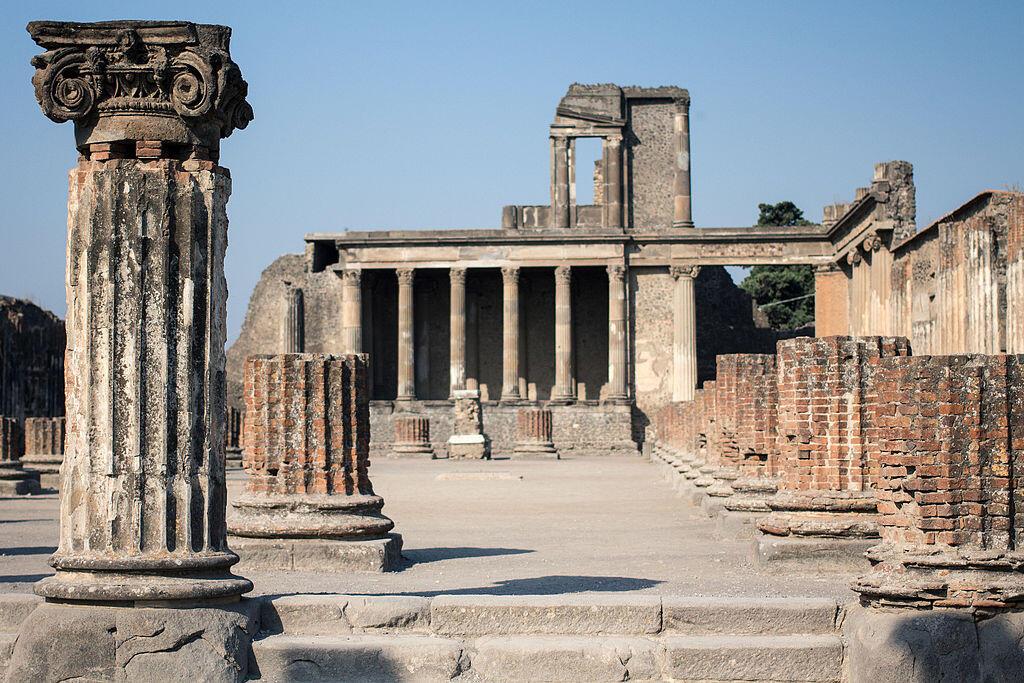(A preface: As I was cleaning my computer, I accidentally lost photos from Pompeii. Therefore, this post uses images from other photographers. Featured image credit: Paul Kelley from Merrimac, MA, United States, CC BY 2.0 https://creativecommons.org/licenses/by/2.0, via Wikimedia Commons)
How surreal it is to stand on the threshold of one of the Earth’s most iconic stories. In 79 CE, Vesuvius erupted with immense force, sending a column of soot into the sky that buried the area alive beneath 82 feet of ash as it fell back to the Earth. Witness to the cataclysm, Pliny the Younger described;
“Meanwhile, on Mount Vesuvius, broad sheets of fire and leaping flames blazed at several points, their bright glare emphasized by the darkness of night…You could hear the shrieks of women, the wailing of infants, and the shouting of men; some were calling their parents, others their children or their wives, trying to recognize them by their voices. People bewailed their own fate or that of their relatives, and there were some who prayed for death in their terror of dying. Many besought the aid of the gods, but still more imagined there were no gods left, and that the universe was plunged into eternal darkness for evermore.”
The tragedy of Pompeii has inspired numerous pieces of fiction and been studied in countless books and documentaries. The latter of these, often featured on PBS or among the shelves of my local library, captivated me as a child. I could not get enough of the discoveries of those heroic archaeologists and seismologists who uncover the history of Pompeii and the activity of Vesuvius, discovering much of their past and acquiring a better understanding of Roman lifestyles and history.
I stood at the head of our tour group, just across the small bridge separating us from Pompeii’s amphitheater. I was awestruck. Stepping across those wooden planks was as close to stepping into history as one could get. I don’t know what I had expected the entrance to an ancient, ruined city to be like. Perhaps, coming from America where a place of 300 years old is a wonder, the ruins of Pompeii were simply beyond my imagining.
As we entered the ruined structure, drops of rain forewarned a possible downpour, yet the storm clouds seemed content to merely make threats and never more than slowly drizzled. Grass and little flowers grew on soil patches across much of the arena’s old seating. I could easily see how this amphitheater had been buried beneath a hill of ash, forgotten over the centuries as its seats were repopulated by blades of green.
We moved into the city proper and Pompeii exceeded all of my expectations. If you have not visited, then picture the ruined city in your mind. Now double its size… double it again. If you assumed, like me, that Pompeii was reduced to just a few crumbling streets, then as surprising as this description of size is, it should be rather accurate. The complex is huge! I maybe only walked half the roads and entered into fewer buildings than that in the few hours we were there. Where I figured I would find a sunny field with some foundations and ruin walls, I instead discovered a city with an ancient but still distinctly Mediterranean feel. The buildings were taller and more complete than I ever expected. Many of the structures still rise a couple stories into the air, their roofs and interiors decayed away, but still clearly in the form they were when buried. Crooked streets between tightly packed buildings could easily have been packed with Roman citizens instead of the waves of tourists. Food vendors in the storefronts (some of whose stone booths still stand) once beckoned Pompeians strolling to the bathhouses and spas or perhaps to the forum for daily worship and trade.
Yet, cataclysm did strike here. While careful preservation and cleaning has reduced the evidence of the apocalyptic eruption which decimated the city, one exhibit will not let it be forgotten. The plaster casts of Vesuvius’s victims lie in scattered cases across the city. Children, pets and dozens of adults lie in contorted positions, their last conscious movements preserved in forms writhing against the burning heat of the pyroclastic flow. The tragedy of Pompeii doesn’t sink in until you stand before these images.
These plaster casts were created by Giuseppe Fiorelli in 1863 when he deduced that the voids which commonly seem to occur wherever they found bones where in fact spaces once occupied by victim’s bodies. He devised a method to preserve these images, pouring plaster into the holes and digging around the hardened representations of dying Pompeians. The same method is still used today, though the plaster has been replaced by resin which is more durable and allows for easier study of the bones within.
Vesuvius still rises above Pompeii, active though quiet for the moment. Even as more of the ancient Roman city is uncovered from its grave of soot, it isn’t free from the threat of being buried again. Many of the ancient Pompeians made the mistake of thinking they could survive the fury of the mountain, hopefully people in the shadow of Vesuvius today will learn a lesson from the destruction caused a millennia ago—should they have to make that decision in the future.
Signed,
Andrew
